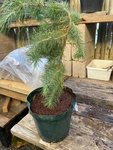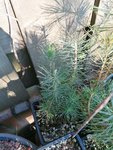Devo12
Mame
Hey guys,
just got a JWP and don’t have too much experience regarding them and can’t find too much information regarding a young white pine in this stage - so it’s ending winter here and was wondering if I should do some needle plucking just for some light ? Cause this thing is covered in them
also style suggestions?
just got a JWP and don’t have too much experience regarding them and can’t find too much information regarding a young white pine in this stage - so it’s ending winter here and was wondering if I should do some needle plucking just for some light ? Cause this thing is covered in them
also style suggestions?



